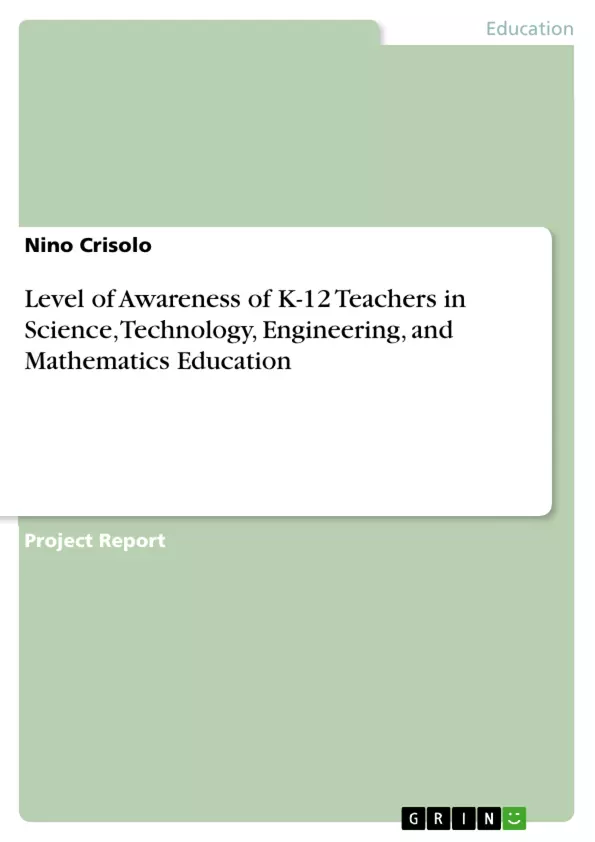This study aimed to determine the level of awareness of K-12 teachers towards science, technology, engineering, and mathematics education with an end view of developing an open online course. Descriptive research design was employed through the use of online survey questionnaire. The respondents of this study were composed of 77 conveniently available teachers from 15 public schools in San Andres District, San Andres Quezon. The gathered data was analyzed and interpreted using graphs and tables supported by the use of statistical treatment; frequency count and percentage; and Pearson correlation coefficient (Pearson r). The time frame of this study was from April 2021 to October 2021. This action research is vital in educating teachers about quality STEM Education amidst the global pandemic.
Table of Contents
- 1 INTRODUCTION
- 2 RESEARCH QUESTIONS
- 3 SCOPE AND LIMITATION
- 4 METHODOLOGY
- Locale of the Study
- Research Design
- Research Instrumentation
- Data Gathering Procedure
- Statistical Treatment
Objectives and Key Themes
This study aimed to determine the level of awareness of K-12 teachers towards STEME with the objective of developing an open online course. It sought to answer the following research questions: What is the demographic profile of teachers? What is the level of awareness of teachers in STEME? Is there a significant relationship between teacher awareness and demographic profiles? What is the level of acceptability of an Open Online Course for Teachers?
- Teacher awareness of STEME
- Development of an open online course on STEME
- Teacher demographics and their relationship to STEME awareness
- Acceptability of the open online course
- Impact of STEME education on national development and productivity
Chapter Summaries
The introduction provides context for the study by highlighting the importance of STEME in national development and productivity. It also points to the challenges in implementing STEME programs in the Philippines, such as lack of competent faculty and inadequate science curriculum.
The research questions section outlines the specific areas of inquiry explored in the study, including teacher demographics, their level of awareness of STEME, and the acceptability of an open online course for teachers.
The scope and limitations chapter defines the parameters of the study, specifying the sample size, data collection methods, and time frame. It acknowledges the limitations of the study, such as the use of a convenience sample.
The methodology section details the research design, instrumentation, data collection procedure, and statistical treatment employed in the study. It outlines the use of descriptive research design, an online checklist questionnaire, and statistical analysis techniques like frequency count, percentage, and Pearson correlation coefficient.
Keywords
The primary keywords and focus topics of this study are Science, Technology, Engineering and Mathematics Education (STEME), Open Online Course, and Science Education Program. The study investigates the level of awareness of K-12 teachers regarding STEME, the development and acceptability of an open online course for teachers, and the broader impact of STEME education on national development.
- Quote paper
- Nino Crisolo (Author), 2022, Level of Awareness of K-12 Teachers in Science, Technology, Engineering, and Mathematics Education, Munich, GRIN Verlag, https://www.grin.com/document/1254734



